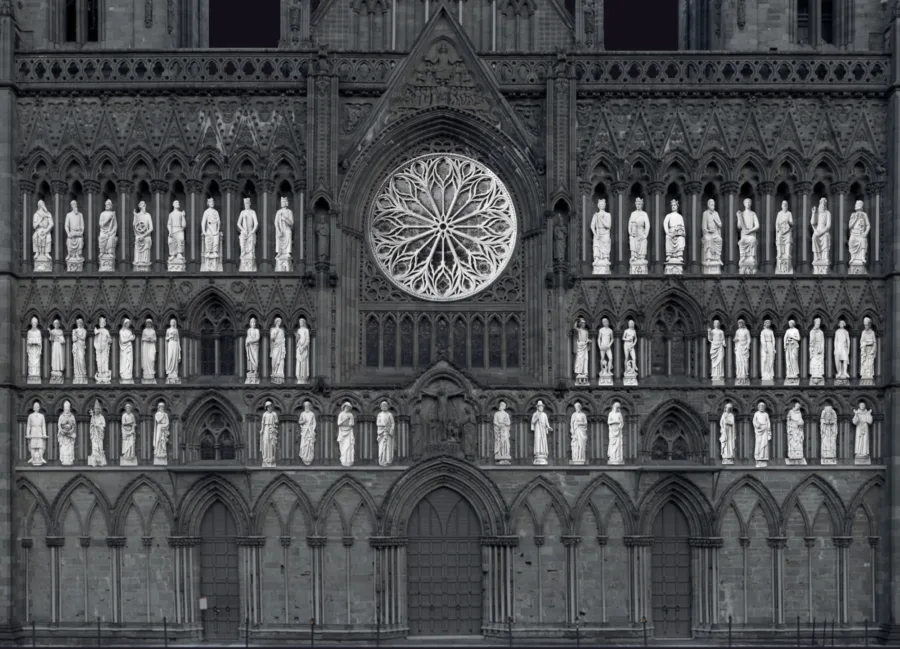Justice
“The Four Sisters”: Justice

This is one of four statues that depict the story of “the four Daughters of God”.
Adam ate an apple from the Tree of Knowledge and had to face the consequences. “The four Daughters of God” – Mercy, Truth, Justice and Peace – were supposed to testify at Adam’s trial to illuminate all aspects of the case before judgment was passed. The Daughters have their names from Psalm 85 in the Old Testament. “Mercy and Truth are met together; Justice and Peace have kissed each other.”
This story was a source of inspiration for the development of a more humane system of justice in the Middle Ages. It was a reminder that cases should be seen from different sides so that the judgment passed could be as objective as possible. Norway’s King Magnus Lawmender (1263–1280) was nevertheless the only European monarch to make explicit reference to the four Daughters in his National Law of 1274.
The four virtues:
Truth: Judgment must rest on facts.
Mercy: Judgment shall not spring from anger and a desire for vengeance.
Peace: Judgment must not be so harsh that the defendant cannot make amends.
Justice: Judgment must rest on the law and an objective assessment.
The statue
The sculpture depicts a young woman holding a set of scales in her left hand. The scales symbolise the balance between right and wrong. In her right hand, she holds a sword, the symbol of punishment. As a rule, Justice is also depicted as being blindfolded, as a symbol that justice is blind.
-
The sculpture
The statue was modelled by Odd Hilt and carved by Josef Ankile in 1965.


